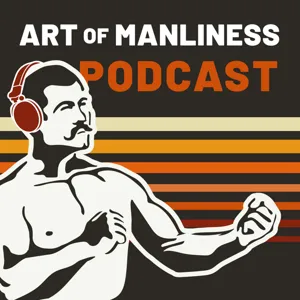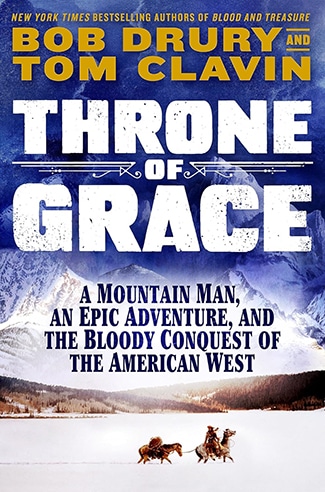Podcast Summary
Exploring common causes of catastrophic failures in complex systems: Understanding the role of culture, engineering, and organizations in managing failure and complexity can help prevent future disasters, illustrated through examples of nuclear meltdowns, plane crashes, and flash stock market crashes.
Complex systems, whether in business or personal life, have inherent vulnerabilities that can lead to catastrophic failures. Authors Chris Clearfield and Andrash Tillczyk, in their book "Meltdown," explore how seemingly disparate events like plane crashes, nuclear meltdowns, and flash stock market crashes share common causes. They argue that understanding these failures can help us prevent future disasters. Clearfield, with a background in physics and biochemistry, and Tillczyk, with a social science perspective, came together to examine the role of culture, engineering, and organizations in managing failure and complexity. Through examples like the Three-Mile Island nuclear reactor meltdown and Starbucks' social media campaign gone awry, they illustrate the importance of creating stronger, more resilient systems. Regular folks can apply these insights to improve their own lives by being aware of the complex systems they interact with and taking steps to mitigate potential risks.
Complex systems: prone to unpredictable failures: Complex systems, with many intricately connected parts, can lead to catastrophic failures not caused by external shocks but by unpredictable interactions between components.
Complex and tightly coupled systems, which have many intricately connected parts and lack margin for error, are prone to catastrophic failures. These failures are not caused by external shocks but rather by the confusion and surprise that arise when complex systems behave in unpredictable ways in unforgiving environments. Charles Perot, a sociologist who studied organizational failures, first identified this phenomenon in the aftermath of the Three Mile Island nuclear accident. He found that the accident was not caused by a single major event but rather by a combination of small issues that interacted in unexpected ways. This insight has continued to resonate in the study of catastrophic failures and has been applied to modern systems. It's important to note that not all complex systems are prone to failure. A system can be complicated without being complex, meaning it has many parts but they are not intricately connected. Understanding the difference between complexity and complication is crucial for identifying and mitigating risks in complex systems.
Understanding Complexity and Tight Coupling in Systems: Complexity refers to unintended connections between parts, leading to network effects. Tight coupling is a system with little slack or buffer, making it vulnerable to catastrophic failures. Distinguishing between the two is essential for designing and managing resilient systems.
Complexity and tight coupling are key factors leading to catastrophic system failures. Complexity refers to the unintended connections between different parts of a system, making the whole system more important than its individual components. A complex system exhibits network effects where seemingly unrelated parts start interacting, affecting the entire system. Tight coupling, on the other hand, refers to a system with little slack or buffer. An example of a tightly coupled system is an airplane in flight, where there is no time to address problems or bring in additional resources. In contrast, a system like a Rube Goldberg machine is complicated but not complex, as its parts work in a linear fashion and can be easily replaced if one part fails. Understanding the difference between complexity and tight coupling is crucial in designing and managing systems to prevent catastrophic meltdowns.
The internet's impact on complexity and interconnections: The internet has transformed simple and standalone technologies into complex, tightly coupled parts of a global system, increasing capabilities but also vulnerabilities.
Digital technology and the internet have significantly increased complexity and tight coupling in various systems, leading to potential disruptions and risks. The example of connected cars shows how computers and the internet have transformed once simple and standalone technologies into complex and tightly coupled parts of a global system, increasing capabilities but also vulnerabilities. Another example is the Starbucks marketing campaign that went awry when negative messages were able to spread quickly and widely, highlighting the potential consequences of complex, interconnected systems. Overall, the internet has added layers of complexity in both disruptive and seemingly benign ways, emphasizing the importance of understanding and managing these interconnections to mitigate risks.
The interconnected world's complexity and tight coupling: Regulators and policymakers must adapt to the new reality of complex and interconnected finance and communication systems, focusing on building teams that can manage complexity and uncertainty to minimize potential negative impacts.
Our interconnected world, whether through social media or the stock market, is becoming increasingly complex and tightly coupled. Small oversights or glitches in the system can lead to significant and unpredictable consequences. The speed at which information spreads and interacts with other participants only adds to the complexity. Regulators and policymakers must adapt to this new reality, recognizing that the character of finance and communication has fundamentally changed. The ability to manage this complexity and uncertainty is crucial for organizations, and the focus should be on building teams that can thrive in these environments. Flash crashes in the stock market and social media PR disasters serve as reminders of the potential risks and challenges posed by these interconnected systems. As technology continues to advance with the introduction of 5G, the complexity and interconnectedness will only grow. The key is to understand and adapt to these changes to minimize potential negative impacts.
Focusing on weak signals of potential failures: Identifying near misses in complex systems can prevent catastrophic failures, rather than adding more safety measures which might cause confusion and noise.
Adding more safety measures or warnings systems to complex systems, although well-intentioned, can sometimes backfire and lead to more confusion and noise rather than prevention. The Deepwater Horizon explosion and the 737 MAX crashes are examples of this. Organizations and individuals need to focus on identifying weak signals of potential failures, or near misses, to effectively prevent meltdowns. It's important to remember that highly complex systems have unexpected ways of failing, making it crucial to stay attentive and learn from these anomalies.
Treating Anomalies as Valuable Data Points: Recognize and address small anomalies to prevent larger issues and continuously improve systems
It's crucial to treat small anomalies or signs of potential failures as valuable data points instead of dismissing them as insignificant events. These seemingly minor incidents can provide important insights and help prevent larger issues from arising. The tendency to ignore such anomalies is common and can be attributed to the human tendency to focus on outcomes rather than processes. However, by acknowledging and addressing these anomalies, organizations and individuals can learn valuable lessons and improve their systems. An example of this can be seen in the Columbia space shuttle disaster, where engineers had previously observed tiles coming off during landing, but dismissed it as a normal occurrence. However, in 2003, one such incident led to the shuttle's disintegration. Similarly, in our daily lives, we may ignore warning signs, such as a car's check engine light or a slowly running toilet, only to face more significant problems later. To overcome this tendency, individuals and organizations can adopt a few strategies. One approach is to write down and share these anomalies with others. Additionally, fostering a culture that encourages open discussion of mistakes and errors can help organizations learn from their experiences and improve their processes. By taking a proactive approach to addressing small anomalies, we can prevent larger issues from arising and continuously improve our systems.
Celebrating mistakes for learning: Companies can prevent major failures by embracing mistakes, addressing anomalies promptly, using techniques like the primortum method to identify potential issues, and encouraging open communication about risks and failures.
Creating a culture where mistakes are embraced and learning from them is prioritized can prevent major system failures. Companies like Etsy celebrate such mistakes through awards and recognition. Paying attention to anomalies and addressing them promptly is crucial, as well as using techniques to identify potential issues before they escalate. The primortum technique, for instance, involves imagining a project failure and having team members write about reasons for it, which can lead to more specific and comprehensive problem identification. Encouraging open communication about potential risks and failures, rather than just brainstorming them, can also be effective. Ultimately, accepting that mistakes will happen and focusing on learning from them can help prevent catastrophic meltdowns.
Learning from past failures: Analyzing past mistakes can lead to improved outcomes by fostering creative solutions and effective problem-solving through open discussions and diverse perspectives.
Examining past failures can provide valuable insights for preventing similar issues in the future. Instead of focusing on what could go wrong, it's essential to discuss what did go wrong in past experiences, such as vacations, class reunions, or home renovation projects. By openly discussing these failures and identifying the root causes, individuals can find creative solutions and improve outcomes. Additionally, having a diverse team or group can lead to better results, as research suggests that people in diverse groups tend to be more skeptical and question each other's assumptions, leading to increased distrust in a cognitive sense. This distrust, in turn, fosters more rigorous discussions and ultimately leads to more creative and effective problem-solving.
Managing Conflict in Complex Systems: Effective conflict management in complex systems requires leaders to value cognitive conflict, minimize personal conflict, and trust diverse team perspectives to make informed decisions.
Friction and diversity can be beneficial in complex systems, leading to better decision-making and increased effectiveness. However, it's essential to manage this conflict effectively to ensure it remains task-focused and doesn't turn into unproductive interpersonal conflict. Leaders play a crucial role in creating a culture that values and celebrates cognitive conflict while minimizing personal conflict. As systems become more complex, senior leaders must delegate more and trust their teams to navigate the complexities, relying on the diverse perspectives and expertise of their team members to make informed decisions. Data from various industries, including banking, demonstrate that professional diversity, in particular, can lead to increased skepticism and disagreement, which can be advantageous in complex environments. Ultimately, embracing and managing conflict effectively is crucial for navigating complex systems and avoiding costly mistakes.
Seeking diverse perspectives for informed decision-making: To make effective decisions, especially in complex situations, seek out diverse perspectives, allow disagreements to be escalated, and be open to contradictory feedback. Avoid confirmation bias and the tendency to discard contradictory information.
Effective decision-making, especially in complex situations, requires seeking out diverse perspectives and being open to contradictory feedback. In organizations, leaders can set up processes that allow for informed decision-making while minimizing risks. This includes establishing clear output parameters and allowing disagreements to be escalated. In personal life, individuals can create a "sounding board" of diverse perspectives to help navigate complex decisions. Be mindful of confirmation bias and the tendency to discard information that contradicts our opinions, a phenomenon known as "get theiritis." By seeking out diverse perspectives and being open to contradictory feedback, we can make better decisions, faster.
Assessing Project Failure and Avoiding Sunk Cost Fallacy: Effective organizations start with a testable theory, break free from biases, and make informed decisions to prevent project meltdowns. Avoiding sunk cost fallacy and shocking yourself out of the status quo is crucial for making sound decisions.
Pushing forward with a failing project out of ego or sunk cost fallacy can lead to disastrous consequences, from personal failures to large-scale business meltdowns. Effective organizations start with a testable theory and are able to break free from implicit biases to make informed decisions. To assess if you're heading for a project meltdown, take the quiz at rethinkrisk.net. Follow Chris Clearfield and András Tilli on Twitter, and visit chrisclearfield.com for more information. Remember, being able to shock yourself out of the status quo and sunk cost fallacy is crucial for making sound decisions. Listen to the full conversation on the Art of Manliness podcast, available on Amazon.com and bookstores everywhere. For ad-free listening, sign up for Stitcher Premium using promo code manliness. Don't forget to leave a review and share the show with others.













